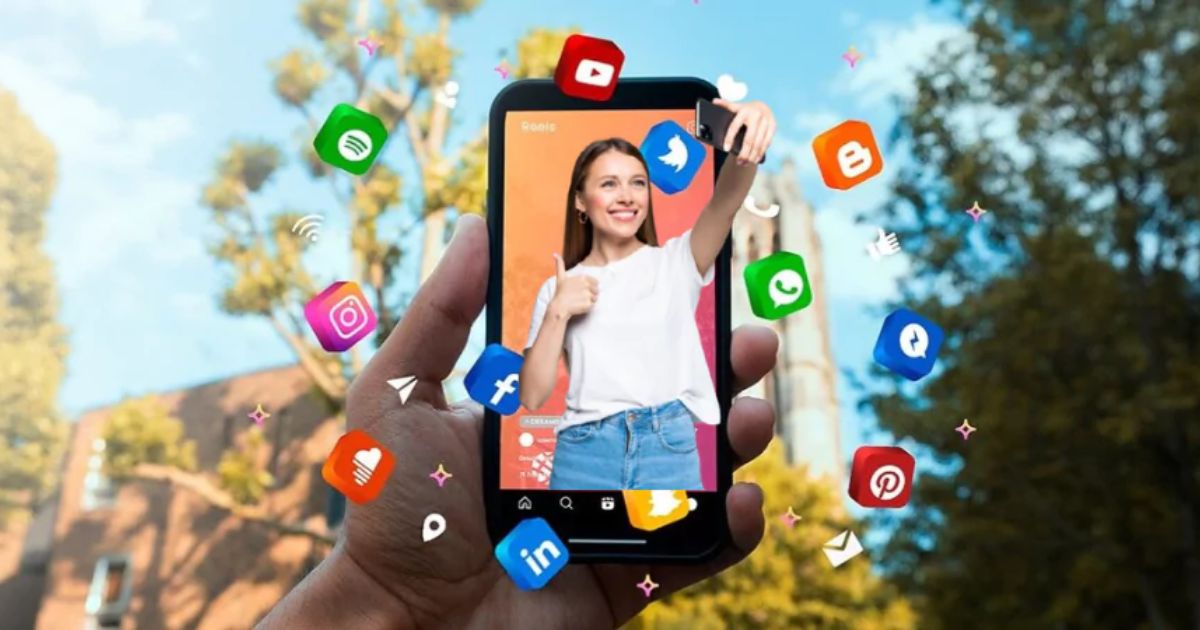Are social media influencers changing the game—or crossing the line? The phenomenon known as “InfluencersGoneWild” has rapidly transformed the digital marketing landscape, creating both unprecedented opportunities and significant challenges for businesses. This evolution represents a fundamental shift in how brands connect with consumers and manage their market presence.
Influencer marketing has expanded into a $21.1 billion industry in 2024, with brands increasingly relying on social media personalities to reach target audiences. However, this growth comes with substantial risks. As influencers push boundaries to capture attention in a saturated market, their actions can significantly impact brand reputation, consumer trust, and financial outcomes.
For marketing executives and brand managers, understanding the dynamics of influencer partnerships has become essential. From viral fame to brand risks—here’s everything you need to know about navigating the complex world of influencer marketing.
The Rise of Influencers in Business & Marketing
The evolution of influencer marketing represents one of the most significant shifts in digital advertising strategy of the past decade. What began as bloggers recommending products has transformed into a sophisticated ecosystem of content creators who can significantly impact consumer behavior and purchasing decisions.
Social media platforms have become the primary battleground for influencer marketing, with Instagram, TikTok, YouTube, and Twitter/X dominating the landscape. Each platform offers unique advantages: Instagram for visual lifestyle content, TikTok for short-form viral videos, YouTube for in-depth reviews, and Twitter/X for real-time engagement.
The economic power of influencers cannot be overstated. Approximately 80% of brands now incorporate influencer marketing into their strategic plans, recognizing its effectiveness in reaching specific demographic segments. Successful collaborations, such as Gymshark’s partnerships with fitness influencers or Glossier’s relationships with beauty content creators, have demonstrated remarkable ROI compared to traditional advertising channels.
These partnerships succeed primarily because they leverage authentic connections between influencers and their audiences. When executed properly, these collaborations appear as genuine recommendations rather than advertising, creating valuable trust that traditional marketing struggles to achieve.
What Does “InfluencersGoneWild” Mean?
“InfluencersGoneWild” refers to a pattern of risky, controversial, or shocking content created by social media personalities to generate engagement, often at the expense of ethical considerations. This behavior manifests in several distinct categories that present varying degrees of risk to associated brands.
Sensational stunts have become increasingly common as influencers compete for attention. Logan Paul’s infamous video in Japan’s Aokigahara forest demonstrated how quickly controversial content can damage both personal and corporate reputations. Brands associated with Paul experienced significant backlash despite having no direct connection to the content.
Ethical dilemmas frequently arise through misleading promotions or fake giveaways. Influencers promising prizes that never materialize or promoting products they’ve never used undermine consumer trust in both the influencer and associated brands. These practices have drawn increased scrutiny from regulatory bodies worldwide.
Extreme social media challenges represent another manifestation of the trend. Dangerous activities like the Tide Pod Challenge or NyQuil Chicken not only pose health risks to participants but create potential liability issues for brands caught in the crossfire. Companies must remain vigilant about how their products appear in viral challenges, even when they haven’t endorsed the content.
Perhaps most concerning are financial scams and misleading sponsorships. Cryptocurrency pump-and-dump schemes promoted by influencers have resulted in substantial financial losses for followers and serious legal repercussions for both influencers and associated platforms. These incidents highlight the critical importance of due diligence in brand partnerships.
Why Audiences Love “InfluencersGoneWild” Content
The psychological and social factors driving engagement with controversial influencer content reveal important insights about consumer behavior in the digital age. Understanding these motivations can help brands develop more effective strategies for their own content and partnerships.
Entertainment value remains paramount in driving engagement. Shock content attracts views precisely because it breaks norms and expectations, creating memorable experiences that audiences are likely to share and discuss. This virality potential often motivates influencers to push boundaries increasingly further.
FOMO (Fear of Missing Out) creates powerful urgency around viral trends. When audiences perceive that everyone is talking about a particular influencer or trend, they feel compelled to participate to remain culturally relevant. This psychological mechanism drives rapid content spread regardless of the content’s quality or ethical considerations.
The tension between relatability and extremism forms another crucial dynamic. Audiences connect with influencers who appear authentic but are simultaneously drawn to extraordinary or boundary-breaking behavior. This paradox places influencers in a difficult position where they must appear both relatable and exceptional simultaneously.
Dopamine-driven engagement underlies much of social media consumption. Extreme or controversial content triggers stronger emotional responses, which social media algorithms recognize and promote. This creates a feedback loop where increasingly provocative content receives disproportionate distribution, incentivizing further boundary-pushing behavior.
Understanding these psychological drivers allows brands to create engaging content without resorting to controversial tactics that might damage their reputation or violate their values.
The Business & Financial Risks for Brands
Brands face significant challenges when navigating influencer partnerships, with potential consequences extending far beyond marketing outcomes. These risks require careful evaluation before committing to any influencer relationship.
Negative PR represents the most immediate threat. When influencers engage in controversial behavior, brands associated with them often face backlash by association. The swift decisions by brands to distance themselves from influencers like James Charles following controversy, Logan Paul after the Aokigahara forest video, or Andrew Tate amid serious allegations demonstrate how quickly these situations can escalate.
Consumer trust issues emerge when influencers engage in deceptive practices. Artificially inflated follower counts, dishonest sponsorships, and misleading advertisements undermine audience faith not only in the influencer but in all brands associated with them. Once lost, this trust proves extremely difficult to rebuild.
Brand misalignment occurs when influencer behavior contradicts a company’s stated values. A sustainability-focused brand partnering with an influencer who later promotes fast fashion, for example, creates cognitive dissonance for consumers and damages brand perception. This inconsistency can undermine years of careful brand positioning.
Legal and financial liabilities present perhaps the most serious concerns. FTC guidelines regarding disclosure of sponsored content have become increasingly strict, with significant penalties for non-compliance. False advertising claims and intellectual property disputes can result in costly litigation. Brands may be held partially responsible for influencer misconduct if their oversight is deemed insufficient.
These risks necessitate comprehensive vetting procedures and clear contractual agreements before establishing any influencer partnership. Protective measures must be implemented proactively rather than reactively to safeguard brand reputation and financial interests.
Read This Post: Ashcroft Capital Lawsuit: Legal Battle & Investor Impact
How Brands Can Safely Leverage Influencer Marketing
Despite the inherent risks, brands can implement strategic approaches to benefit from influencer marketing while minimizing potential negative outcomes. Effective risk management requires systematic evaluation and clear protocols.
Due diligence represents the foundation of successful influencer partnerships. Comprehensive research into an influencer’s content history, audience demographics, engagement metrics, and previous brand collaborations provides critical insights into potential compatibility. This investigation should include examination of past controversies and how the influencer responded to them.
Contracts and guidelines must explicitly outline content expectations, approval processes, and consequences for violations. These agreements should specify prohibited behaviors, required disclosures, content ownership rights, and termination clauses. Legal review of these documents is essential to ensure enforceability.
Diversified marketing strategies prevent over-reliance on any single influencer. Brands should distribute their influencer budget across multiple partnerships of varying scales rather than concentrating resources on one high-profile relationship. This approach creates resilience against individual influencer controversies while reaching diverse audience segments.
Transparency and compliance with regulatory requirements protect brands from legal repercussions. All sponsored content must adhere to FTC guidelines regarding disclosure, ensuring audiences clearly understand the commercial nature of the relationship. Regular monitoring of regulatory changes ensures continued compliance.
Reputation management plans should be established before they’re needed. These protocols should outline specific actions, responsibilities, and communications strategies to implement if an influencer behaves controversially. Prepared statements, decision trees, and designated crisis teams enable swift, coherent responses.
Many brands have found success by prioritizing micro-influencers (10,000-100,000 followers) with high engagement rates and strong brand alignment over mega-influencers with massive but less engaged audiences. These partnerships often deliver superior ROI while presenting significantly lower risk profiles.
The Future of Influencer Culture & Ethical Branding
The influencer marketing landscape continues to evolve rapidly, with several emerging trends likely to reshape brand strategies in coming years. Understanding these developments allows forward-thinking companies to position themselves advantageously.
A potential shift toward authenticity appears increasingly likely as consumers grow more sophisticated in recognizing contrived content. Research indicates that younger audiences particularly value transparency and genuineness in digital communications. Brands that prioritize authentic relationships over manufactured engagement may gain competitive advantages in consumer trust.
AI influencers and virtual brand ambassadors represent an intriguing development that may mitigate certain risks associated with human influencers. Computer-generated personalities like Lil Miquela have attracted significant followings and brand partnerships without the unpredictability of human behavior. However, these virtual influencers introduce new ethical questions regarding disclosure and manipulation.
Stricter regulatory oversight of social media promotions appears inevitable. Governments worldwide have increased scrutiny of misleading digital marketing practices, with particular focus on health claims, financial promotions, and content targeting vulnerable populations. Brands should anticipate more rigorous compliance requirements and potential penalties for violations.
The increasing importance of trust and ethical branding extends beyond influencer relationships to encompass all aspects of corporate behavior. As consumers increasingly base purchasing decisions on perceived corporate values, brands must ensure consistency between their stated principles and their marketing practices, including influencer selections.
These trends suggest that while influencer marketing will remain powerful, its implementation will likely become more structured, regulated, and aligned with broader corporate social responsibility initiatives.
FAQ’s
Why do influencers engage in “gone wild” behavior?
For attention, engagement, and financial gain, as algorithms reward high-engagement content regardless of sentiment, while monetization pressures drive increasingly extreme content creation.
What are the biggest risks of influencer marketing?
Reputation damage, legal issues from regulatory non-compliance, audience misalignment, and financial losses from unsuccessful partnerships and crisis management costs.
How can brands choose the right influencers?
Check engagement rates over follower counts, review past content consistency, analyze audience demographics, assess ethical reputation, and communicate directly before formalizing partnerships.
What happens when an influencer faces backlash?
Brands implement crisis protocols including pausing campaigns, issuing public statements, reviewing partnership agreements, and deciding whether to maintain, modify, or terminate the relationship based on severity and brand alignment.
Conclusion
The influencer marketing landscape presents both remarkable opportunities and substantial challenges for contemporary brands. When executed strategically, these partnerships can deliver exceptional engagement and conversion rates that traditional advertising cannot match. However, the inherent unpredictability of influencer behavior necessitates comprehensive risk management approaches.
The most successful brands in this space prioritize ethical, strategic partnerships that align with their core values rather than chasing short-term metrics. This approach not only mitigates potential damage but builds sustainable relationships with both influencers and audiences based on authentic connections and shared principles.
As we move forward, the question remains: Is influencer marketing sustainable in its current form, or is it heading toward a major shift? The evidence suggests that while the fundamental concept will endure, its implementation will likely evolve toward greater transparency, accountability, and strategic integration with broader brand initiatives.
For marketing professionals navigating this complex landscape, the key lies in balancing innovation with prudence, leveraging the power of influencer relationships while implementing robust safeguards to protect brand equity and consumer trust.

Hello, I’m Nadeem Sattar, a contributing editor at Opals Magazine. I navigate the intersection of Finance and Technology, delivering insightful analysis and forward-thinking perspectives. Join me on OpalsMAgazine.com for expert coverage of financial innovations, investment strategies, and emerging technologies reshaping our economic landscape.








